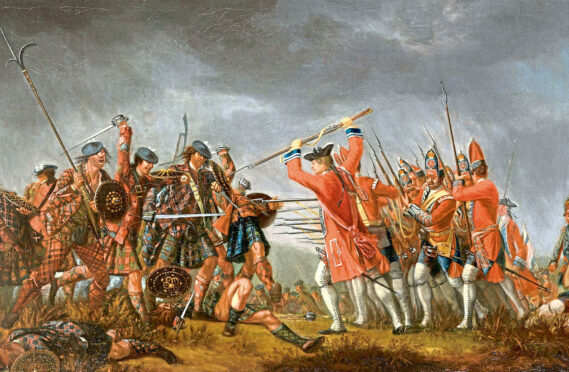
It was the last pitched battle on British soil that shaped the future of the country.
Now, more than 275 years later, the Battle of Culloden is still revealing its bloody secrets. New evidence is to be revealed next month about the 1745 Jacobite uprising and it will show that the battles were far bloodier than previously imagined.
A leading historian of Bonnie Prince Charlie’s attempts to seize the British crown analysed the existing medical records of the combatants’ wounds. What emerged was the full scale of the brutality and how much the battles of Culloden, Prestonpans and Falkirk had been “sanitised and mythologised” over the years.
Dr Darren Layne, curator of The Jacobite Database of 1745 and an associate staff member of Dundee University, will reveal some preliminary results from his upcoming academic paper at the Culloden anniversary commemorations in April, where he will give the first annual Christopher Duffy Memorial Lecture along with National Trust for Scotland archaeologist Derek Alexander.
Layne studied the records of the Royal Chelsea Hospital’s out-pensioners as well as wartime registers of the Edinburgh Royal Infirmary and Stirling Castle. He scoured the National Library of Scotland, National Records of Scotland, and other sources.
They cast new light on Culloden but also the Battle of Prestonpans, fought on September 21, 1745 – the first significant engagement of the Jacobite rising – as well as the Battle of Falkirk, on January 17, 1746. Both of those were won by Bonnie Prince Charlie. However, Culloden resulted in bloody defeat.
The battle on April 16, 1746 saw forces loyal to Charlie defeated by the Duke of Cumberland’s government army.
Fought near Inverness, up to 2,000 Jacobite soldiers and supporting civilians were killed or injured.
But, after studying medical archives, Dr Layne believes the number of recorded wounds – like in the other battles – could be significantly underestimated although the number of deaths is generally considered accurate.
He said: “I was struck by how gruesome and visceral the wounds were. The conflict has been sanitised and mythologised – long before Outlander – when the reality is that this was, in part, a brutal civil war.
“Digging into these records you get a picture of the suffering of people on both sides. The Jacobite soldiers would have had basket-hilted broadswords or backswords and plenty of muskets.
“The battles were relatively short but some of the descriptions of the wounds inflicted are pretty horrific. A lot of injuries were inflicted in close combat in a very short time.
“The battles were brutal. At Prestonpans, the Chelsea records showed a lot of dismemberments and loss of limbs – multiple cuts. It was bloody, close combat.
“The usual numbers of reported injuries in these battles are probably underestimated – by up to 15%. We simply do not have the accurate numbers yet but collections of records like these help to illustrate a greater picture.
“These archival sources provide a reminder of the human cost of battle. It is an unsanitised version – down to the sores and wounds and how they were treated.”

Enjoy the convenience of having The Sunday Post delivered as a digital ePaper straight to your smartphone, tablet or computer.
Subscribe for only £5.49 a month and enjoy all the benefits of the printed paper as a digital replica.
Subscribe